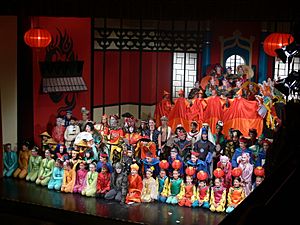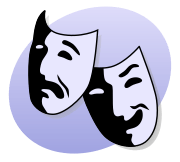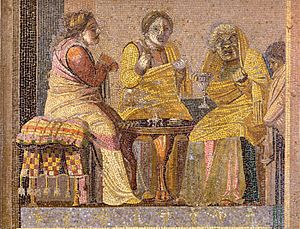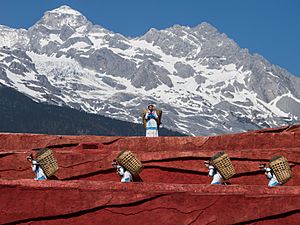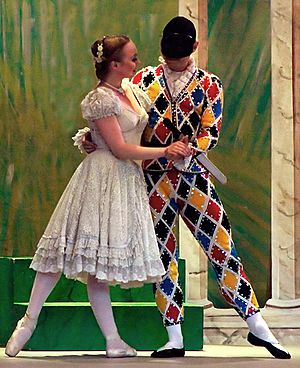Theatre facts for kids
Theatre (British English and also American English), or Theater (mostly American English), has several meanings.
The word comes originally from the Greek Theatron, meaning roughly, 'a place to behold'. In American English, the word 'theater' can mean either a place where films are shown (this is also called a cinema) or a place where live stage plays are performed. In British English, 'theatre' means a place where live plays are performed. Some people, both English and American, use the spelling 'theatre' to mean a place where live plays are performed, and the spelling 'theater' to mean a cinema.
'Theatre' can also mean the business of putting on plays. An actor might say "I am in the theatre business", or a writer might say "I write for the theatre", meaning that they write plays, rather than writing for movies or television shows.
Contents
History
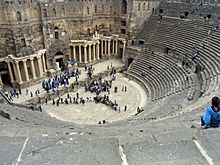
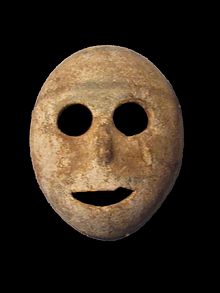
Ancient Greece
The first people we know created plays were the Ancient Greeks, about the year 500 B.C. They divided plays into two kinds: tragedy and comedy. This division is still used today. The best known Ancient Greek writers of plays are Aeschylus, Sophocles, Euripides and Aristophanes. Some of their plays survived, and are still performed today.
These ancient Greek plays were performed outdoors in large amphitheatres, so that many people could see them. There were contests among the playwrights (people who write plays are called playwrights) and the winner would get a prize.
The origins of theatre in ancient Greece, according to Aristotle (384–322 BCE), the first theoretician of theatre, are to be found in the festivals that honoured Dionysus. The performances were given in semi-circular auditoria cut into hillsides, capable of seating 10,000–20,000 people. The stage consisted of a dancing floor (orchestra), dressing room and scene-building area (skene). Since the words were the most important part, good acoustics and clear delivery were paramount. The actors (always men) wore masks appropriate to the characters they represented, and each might play several parts. Illustrations on vases show helmet-like masks, covering the entire face and head, with holes for the eyes and a small aperture for the mouth, plus a wig. The mask was to ‘melt’ into the face and allow the actor to vanish into the role. Therefore, onlookers did not think about the actor, but thought about the character.
The Greeks had many brilliant ideas. They used mechanical devices like trap doors and the machina: a crane for winching gods on and off the stage (hence 'Deus ex machina'). They had a Greek chorus that offered information to help the audience follow the performance. The chorus comments on themes, and shows how an audience might react to the drama.
Roman theatre
Western theatre developed and expanded considerably under the Romans. The Roman historian Livy wrote that the Romans first experienced theatre in the 4th century BCE, with a performance by Etruscan actors. Beacham argues that they had been familiar with "pre-theatrical practices" for some time before that recorded contact. The theatre of ancient Rome was a thriving and diverse art form, ranging from festival performances of street theatre, dancing, and acrobatics, to the staging of Plautus's broadly appealing situation comedies, to the high-style, verbally elaborate tragedies of Seneca. Although Rome had a native tradition of performance, the Hellenization of Roman culture in the 3rd century BCE had a profound and energizing effect on Roman theatre and encouraged the development of Latin literature of the highest quality for the stage. The only surviving plays from the Roman Empire are ten dramas attributed to Lucius Annaeus Seneca (4 BCE–65 CE).
Indian theatre
The first form of Indian theatre was the Sanskrit theatre, earliest-surviving fragments of which date from the 1st century CE. It began after the development of Greek and Roman theatre and before the development of theatre in other parts of Asia. It emerged sometime between the 2nd century BCE and the 1st century CE and flourished between the 1st century CE and the 10th, which was a period of relative peace in the history of India during which hundreds of plays were written. The wealth of archeological evidence from earlier periods offers no indication of the existence of a tradition of theatre. The ancient Vedas (hymns from between 1500 and 1000 BCE that are among the earliest examples of literature in the world) contain no hint of it (although a small number are composed in a form of dialogue) and the rituals of the Vedic period do not appear to have developed into theatre. The Mahābhāṣya by Patañjali contains the earliest reference to what may have been the seeds of Sanskrit drama. This treatise on grammar from 140 BCE provides a feasible date for the beginnings of theatre in India.
The major source of evidence for Sanskrit theatre is A Treatise on Theatre (Nātyaśāstra), a compendium whose date of composition is uncertain (estimates range from 200 BCE to 200 CE) and whose authorship is attributed to Bharata Muni. The Treatise is the most complete work of dramaturgy in the ancient world. It addresses acting, dance, music, dramatic construction, architecture, costuming, make-up, props, the organisation of companies, the audience, competitions, and offers a mythological account of the origin of theatre. In doing so, it provides indications about the nature of actual theatrical practices. Sanskrit theatre was performed on sacred ground by priests who had been trained in the necessary skills (dance, music, and recitation) in a [hereditary process]. Its aim was both to educate and to entertain.
Under the patronage of royal courts, performers belonged to professional companies that were directed by a stage manager (sutradhara), who may also have acted. This task was thought of as being analogous to that of a puppeteer—the literal meaning of "sutradhara" is "holder of the strings or threads". The performers were trained rigorously in vocal and physical technique. There were no prohibitions against female performers; companies were all-male, all-female, and of mixed gender. Certain sentiments were considered inappropriate for men to enact, however, and were thought better suited to women. Some performers played characters their own age, while others played ages different from their own (whether younger or older). Of all the elements of theatre, the Treatise gives most attention to acting (abhinaya), which consists of two styles: realistic (lokadharmi) and conventional (natyadharmi), though the major focus is on the latter.
Its drama is regarded as the highest achievement of Sanskrit literature. It utilised stock characters, such as the hero (nayaka), heroine (nayika), or clown (vidusaka). Actors may have specialised in a particular type. Kālidāsa in the 1st century BCE, is arguably considered to be ancient India's greatest Sanskrit dramatist. The next great Indian dramatist was Bhavabhuti (c. 7th century CE).
East Asian theatre
The Tang dynasty is sometimes known as "The Age of 1000 Entertainments". During this era, Ming Huang formed an acting school known as The Pear Garden to produce a form of drama that was primarily musical. That is why actors are commonly called "Children of the Pear Garden." During the dynasty of Empress Ling, shadow puppetry first emerged as a recognized form of theatre in China. There were two distinct forms of shadow puppetry, Pekingese (northern) and Cantonese (southern). The two styles were differentiated by the method of making the puppets and the positioning of the rods on the puppets, as opposed to the type of play performed by the puppets. Both styles generally performed plays depicting great adventure and fantasy, rarely was this very stylized form of theatre used for political propaganda.
Japanese forms of Kabuki, Nō, and Kyōgen developed in the 17th century CE.
Middle Ages
In the Middle Ages, the Catholic Church began to use theatre as a way of telling the stories from the Bible to people who did not know how to read. They wrote Mystery Plays, where each part of the Bible story would be a play put on by a different group of people. They wrote miracle plays which were about the lives of the saints. They wrote morality plays which taught the audiences how to live a good Christian life.
Medieval Islamic traditions
Theatre in the medieval Islamic world included puppet theatre (which included hand puppets, shadow plays and marionette productions) and live passion plays known as ta'ziya, where actors re-enact episodes from Muslim history. In particular, Shia Islamic plays revolved around the shaheed (martyrdom) of Ali's sons Hasan ibn Ali and Husayn ibn Ali. Secular plays were known as akhraja, recorded in medieval adab literature, though they were less common than puppetry and ta'ziya theatre.
Commedia dell'arte plays
In the 1500s, groups of actors toured around Italy performing comic plays to entertain townspeople. These plays were called Commedia dell'arte, and different stories would be created around the same group of characters. Often the spoken lines would be made up by the actors for each performance.
Other kinds of plays called Neoclassical Dramas and Neoclassical Comedies were also popular in Italy and in France at this time. These plays were written to copy the style of the plays from Ancient Greece and Rome.
Elizabethan theatre
At the end of the sixteenth century (before 1600), the traveling actors began to perform in fixed theatre buildings. This was the period when William Shakespeare wrote. He lived from 1564 to 1616. At that time, in England, women were not allowed to perform, so male actors would play female characters.
His theatre was in London, England. It was called The Globe Theatre. It was an outdoor theatre and plays were performed in the daytime for large audiences. His plays were very popular and many are still performed today. Many people believe Shakespeare was one of the best playwrights (a writer of plays).
Plays including Shakespeare's were banned during the Protectorate'. After that, many more were written and acted.
Plays from the 1900s
After World War II, playwrights in Europe and the United States began doing plays in a new style called "Theatre of the Absurd." After seeing the horrors of war, these playwrights felt that all their old values had been destroyed. Playwrights such as Samuel Beckett, Eugène Ionesco, Harold Pinter, and Jean Genet wrote plays that are considered to be "Theatre of the Absurd."
The "Theatre of the Absurd" plays have some of the same ideas that are found in the philosophy (a way of thinking) called existentialism. Existentialism is very different from many other philosophies. Most religions and philosopies say that human life has a meaning (or a purpose). The philosophy of existentialism is that human life does not have a meaning (or a purpose). When something has no meaning, it is "absurd". (absurd means means silly and meaningless.)
The plays written in this style make people think about questions like "what is it like to be a person in the world?" and "what does it mean for a person to be free?" They are often filled with sad emotions, such as worry, fear, and thoughts about death.
Theatre breaks
Theatre breaks are a form of short holiday, based around viewing a theatrical convention show. Theatre breaks tend to include a nights hotel accommodation included in the price.
Types
Drama
Drama is the specific mode of fiction represented in performance. The term comes from a Greek word meaning "action", which is derived from the verb δράω, dráō, "to do" or "to act". The enactment of drama in theatre, performed by actors on a stage before an audience, presupposes collaborative modes of production and a collective form of reception. The structure of dramatic texts, unlike other forms of literature, is directly influenced by this collaborative production and collective reception. The early modern tragedy Hamlet (1601) by Shakespeare and the classical Athenian tragedy Oedipus Rex (c. 429 BCE) by Sophocles are among the masterpieces of the art of drama. A modern example is Long Day's Journey into Night by Eugene O'Neill (1956).
Considered as a genre of poetry in general, the dramatic mode has been contrasted with the epic and the lyrical modes ever since Aristotle's Poetics (c. 335 BCE); the earliest work of dramatic theory. The use of "drama" in the narrow sense to designate a specific type of play dates from the 19th century. Drama in this sense refers to a play that is neither a comedy nor a tragedy—for example, Zola's Thérèse Raquin (1873) or Chekhov's Ivanov (1887). In Ancient Greece however, the word drama encompassed all theatrical plays, tragic, comic, or anything in between.
Drama is often combined with music and dance: the drama in opera is generally sung throughout; musicals generally include both spoken dialogue and songs; and some forms of drama have incidental music or musical accompaniment underscoring the dialogue (melodrama and Japanese Nō, for example). In certain periods of history (the ancient Roman and modern Romantic) some dramas have been written to be read rather than performed. In improvisation, the drama does not pre-exist the moment of performance; performers devise a dramatic script spontaneously before an audience.
Musical theatre
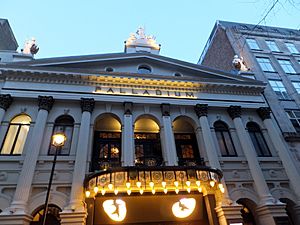
Music and theatre have had a close relationship since ancient times—Athenian tragedy, for example, was a form of dance-drama that employed a chorus whose parts were sung (to the accompaniment of an aulos—an instrument comparable to the modern oboe), as were some of the actors' responses and their 'solo songs' (monodies). Modern musical theatre is a form of theatre that also combines music, spoken dialogue, and dance. It emerged from comic opera (especially Gilbert and Sullivan), variety, vaudeville, and music hall genres of the late 19th and early 20th century. After the Edwardian musical comedy that began in the 1890s, the Princess Theatre musicals of the early 20th century, and comedies in the 1920s and 1930s (such as the works of Rodgers and Hammerstein), with Oklahoma! (1943), musicals moved in a more dramatic direction. Famous musicals over the subsequent decades included My Fair Lady (1956), West Side Story (1957), The Fantasticks (1960), Hair (1967), A Chorus Line (1975), Les Misérables (1980), Cats (1981), Into the Woods (1986), and The Phantom of the Opera (1986), as well as more contemporary hits including Rent (1994), The Lion King (1997), Wicked (2003), Hamilton (2015) and Frozen (2018).
Musical theatre may be produced on an intimate scale Off-Broadway, in regional theatres, and elsewhere, but it often includes spectacle. For instance, Broadway and West End musicals often include lavish costumes and sets supported by multimillion-dollar budgets.
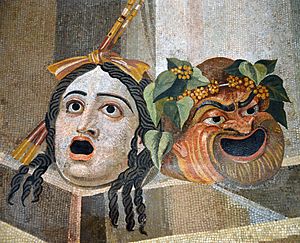
Comedy
Theatre productions that use humour as a vehicle to tell a story qualify as comedies. This may include a modern farce such as Boeing Boeing or a classical play such as As You Like It. Theatre expressing bleak, controversial or taboo subject matter in a deliberately humorous way is referred to as black comedy. Black Comedy can have several genres like slapstick humour, dark and sarcastic comedy.
Tragedy
Tragedy, then, is an imitation of an action that is serious, complete, and of a certain magnitude: in language embellished with each kind of artistic ornament, the several kinds being found in separate parts of the play; in the form of action, not of narrative; through pity and fear effecting the proper purgation of these emotions.
—Aristotle, Poetics
Aristotle's phrase "several kinds being found in separate parts of the play" is a reference to the structural origins of drama. In it the spoken parts were written in the Attic dialect whereas the choral (recited or sung) ones in the Doric dialect, these discrepancies reflecting the differing religious origins and poetic metres of the parts that were fused into a new entity, the theatrical drama.
Tragedy refers to a specific tradition of drama that has played a unique and important role historically in the self-definition of Western civilisation. That tradition has been multiple and discontinuous, yet the term has often been used to invoke a powerful effect of cultural identity and historical continuity—"the Greeks and the Elizabethans, in one cultural form; Hellenes and Christians, in a common activity," as Raymond Williams puts it. From its obscure origins in the theatres of Athens 2,500 years ago, from which there survives only a fraction of the work of Aeschylus, Sophocles and Euripides, through its singular articulations in the works of Shakespeare, Lope de Vega, Racine, and Schiller, to the more recent naturalistic tragedy of Strindberg, Beckett's modernist meditations on death, loss and suffering, and Müller's postmodernist reworkings of the tragic canon, tragedy has remained an important site of cultural experimentation, negotiation, struggle, and change. In the wake of Aristotle's Poetics (335 BCE), tragedy has been used to make genre distinctions, whether at the scale of poetry in general (where the tragic divides against epic and lyric) or at the scale of the drama (where tragedy is opposed to comedy). In the modern era, tragedy has also been defined against drama, melodrama, the tragicomic, and epic theatre.
Improvisation
Improvisation has been a consistent feature of theatre, with the Commedia dell'arte in the sixteenth century being recognised as the first improvisation form. Popularized by Nobel Prize Winner Dario Fo and troupes such as the Upright Citizens Brigade improvisational theatre continues to evolve with many different streams and philosophies. Keith Johnstone and Viola Spolin are recognized as the first teachers of improvisation in modern times, with Johnstone exploring improvisation as an alternative to scripted theatre and Spolin and her successors exploring improvisation principally as a tool for developing dramatic work or skills or as a form for situational comedy. Spolin also became interested in how the process of learning improvisation was applicable to the development of human potential. Spolin's son, Paul Sills popularized improvisational theatre as a theatrical art form when he founded, as its first director, The Second City in Chicago.
Images for kids
-
Sarah Bernhardt as Hamlet, in 1899
-
Theatre Royal, Drury Lane in the West End. Opened in May 1663, it is the oldest theatre in London.
-
Cats at the London Palladium
-
Interior of the Teatro Colón, a modern theater
See also
 In Spanish: Teatro para niños
In Spanish: Teatro para niños



